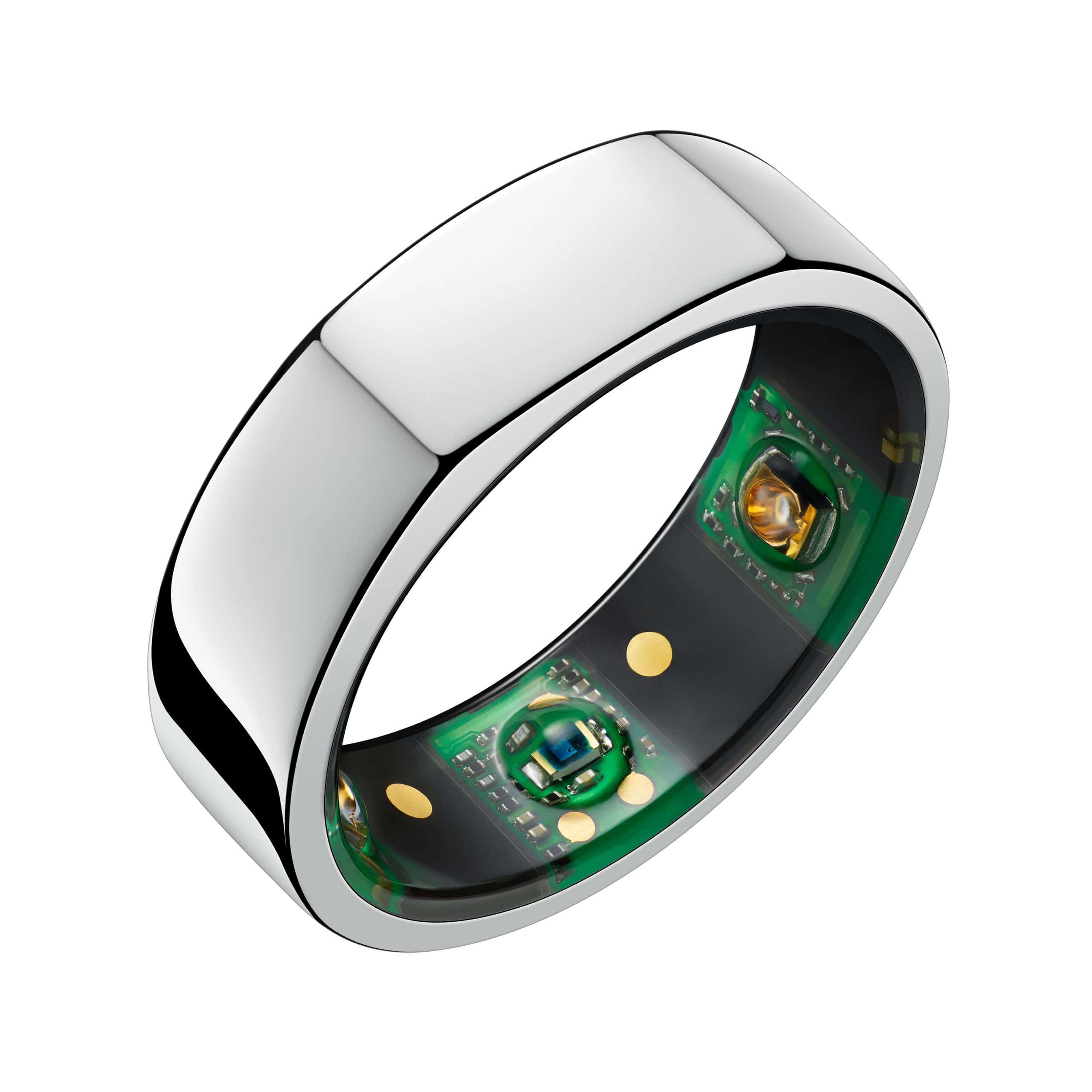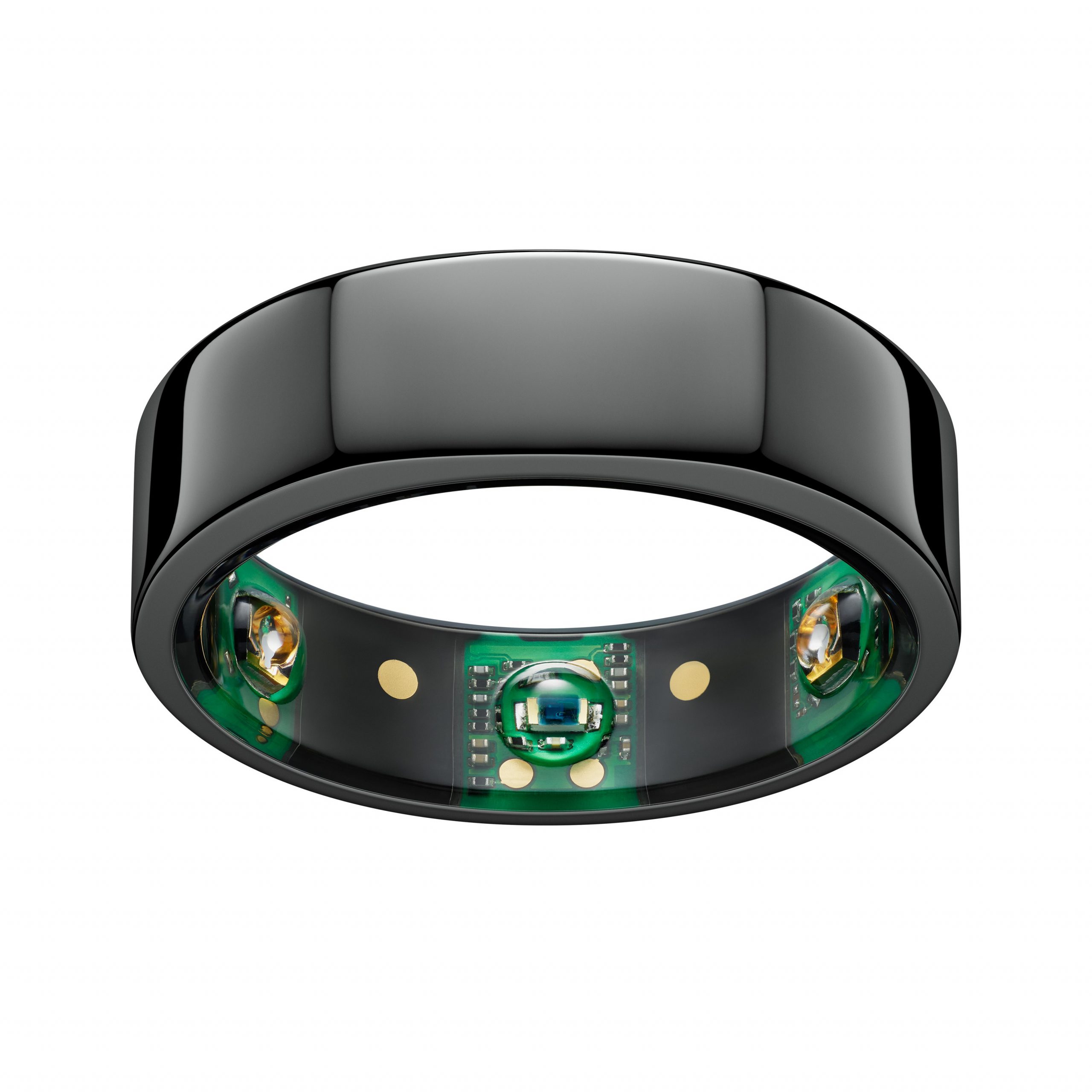
No doubt you have seen workers scanning people’s foreheads to detect a fever at hospitals, airports and businesses. Temperature elevations are one crude way to help diagnose COVID-19. People may have no other symptoms and may not even realize they have a low-grade fever. Early detection can help identify infected people with the goal of preventing the spread of the coronavirus. Follow-up testing is essential to verify or rule out true COVID-19 infections.
The Oura Ring:

The sensors built into the ring monitor heart rate, heart rate variability, respiration, physical activity and sleep quality. The ring also collects continuous temperature data during the day and night. Information is transmitted to the user’s smartphone and stored on the cloud.
A Ring to Help Diagnose COVID-19:
Researchers now report that the Oura ring may be able to detect fever at an early stage of infection (Scientific Reports, Dec. 14, 2020). This may help diagnose COVID-19 at a very early stage.
The CDC provides guidance for a reportable illness like COVID-19.
It defines an ill person as someone who:
“Has a fever (has a measured temperature of 100.4 °F [38 °C] or greater, or feels warm to the touch, or gives a history of feeling feverish)…”
The trouble with the coronavirus, though, is that many people do not feel feverish. That means they can spread COVID-19 to dozens of others without even realizing they are contagious.
The authors of this study introduce their investigation this way:
“Fever refers to an atypical elevation in body temperature generally (but not always) associated with an immunologic response to viral or bacterial infection. Individual and government efforts to track the spread of SARS-CoV2 (in which infection is characterized by fever) have employed classical thermometry at largely random timepoints, for example when entering a workplace or boarding a bus. However, single-point measures have limited sensitivity to detect disease, particularly in the earliest stages of onset; this lack of utility has dampened the perceived value of temperature assessment in disease prevention and containment.”
The TemPredict Study:
Here is how the researchers describe their idea:
“We launched TemPredict in March of 2020 to assess whether we could identify the onset of COVID-19 symptoms using continuously collected, wearables-derived dermal temperature data from the Oura ring sensor device. No prior studies have demonstrated the feasibility of using such data to identify fevers.”
The 50 individuals in this pilot study were already wearing Oura rings before the study began. They had also experienced COVID-19 symptoms. The investigators detected changes in daily body temperature patterns a few days before people reported symptoms.
Can Data From a Ring Help Diagnose COVID-19?
If someone is unaware that their temperature is elevated, they may assume they are healthy. If they have no other symptoms, they could easily spread SARS-CoV-2 without realizing it.
The Oura ring can detect early temperature changes as well as other signals of infection.
That’s why a wearable ring might help diagnose COVID-19 at the earliest stage of the infection.
“…the majority of participants exhibited temperature anomalies prior to symptom reports (38/50), which could be flagged for investigation by comparison across other physiological variables (increased HR [heart rate] and RR [respiration rate], decreased HRV [heart rate variability]). Specifically, upon viral or bacterial infection, innate immune cells secrete proinflammatory cytokines, which alter central nervous system firing rates of warm-sensing neurons in the hypothalamus.
“Relative to individuals for whom fever-like days were not detected during their reported symptom window, individuals with detected fever-like days in their reported symptom window tended to have elevated temperature in a fever-associated excursion from this baseline cluster, in which HR increased and HRV decreased.”
The authors point out that this is purely a proof of concept study. It suggests that wearable devices such as the Oura ring may help diagnose COVID-19. More research will be required to verify this approach. It is hoped that wearable monitors might be able to detect infectious outbreaks such as influenza before patients or public health authorities become aware of surges.
One caveat: The Oura ring is pricey! It starts at $299. The Heritage gold Oura ring is $399 and there are a variety of pricier versions. Then again, smart watches that also monitor activity, heart rate and sleep are pricey too.
Share your thoughts about wearable monitoring devices in the comment section below.
Citations
- Smarr, B. L., et al, "Feasibility of continuous fever monitoring using wearable devices," Scientific Reports, December, 14, 2020, https://doi.org/10.1038/s41598-020-78355-6

